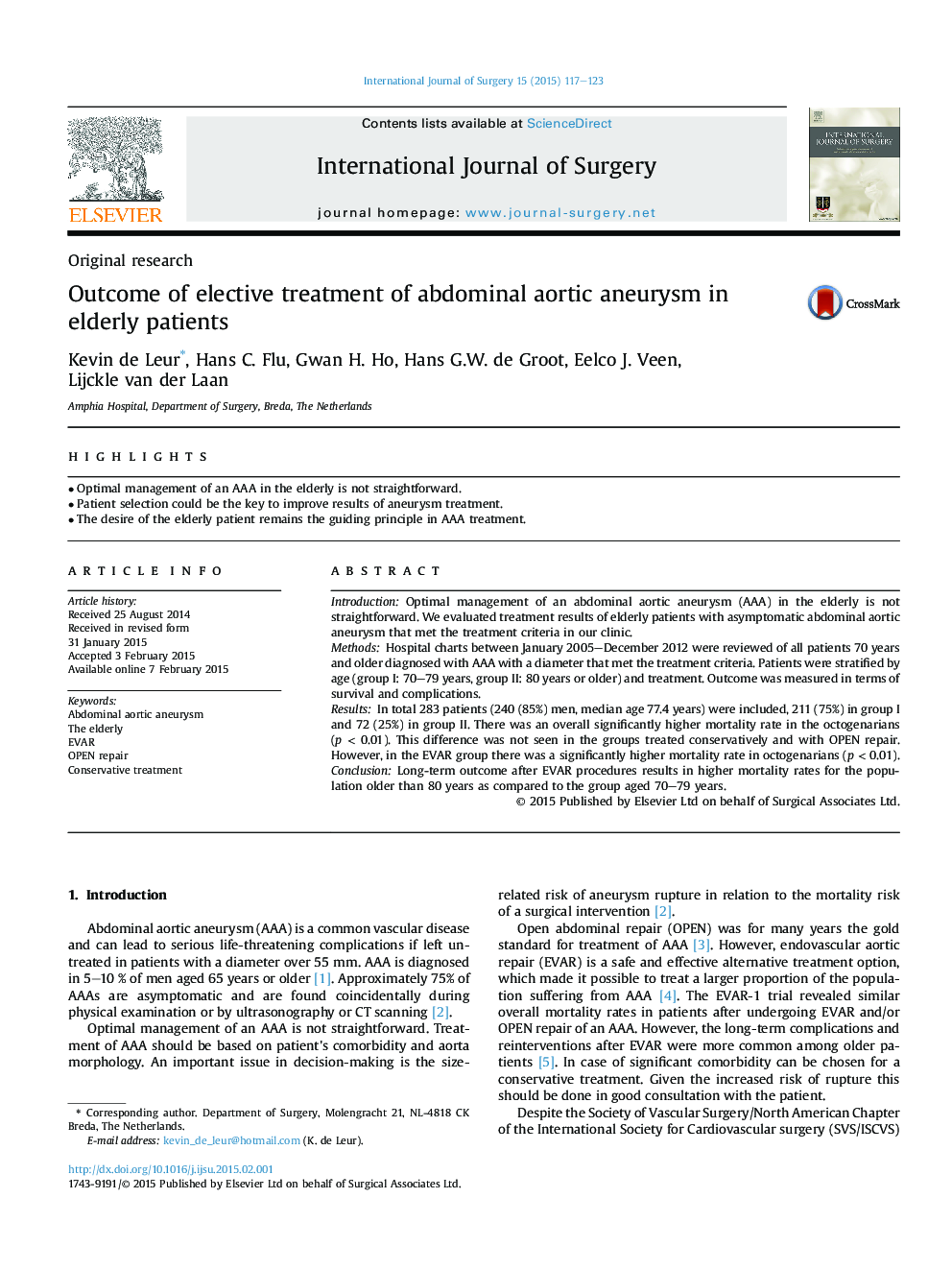| Article ID | Journal | Published Year | Pages | File Type |
|---|---|---|---|---|
| 4286230 | International Journal of Surgery | 2015 | 7 Pages |
•Optimal management of an AAA in the elderly is not straightforward.•Patient selection could be the key to improve results of aneurysm treatment.•The desire of the elderly patient remains the guiding principle in AAA treatment.
IntroductionOptimal management of an abdominal aortic aneurysm (AAA) in the elderly is not straightforward. We evaluated treatment results of elderly patients with asymptomatic abdominal aortic aneurysm that met the treatment criteria in our clinic.MethodsHospital charts between January 2005–December 2012 were reviewed of all patients 70 years and older diagnosed with AAA with a diameter that met the treatment criteria. Patients were stratified by age (group I: 70–79 years, group II: 80 years or older) and treatment. Outcome was measured in terms of survival and complications.ResultsIn total 283 patients (240 (85%) men, median age 77.4 years) were included, 211 (75%) in group I and 72 (25%) in group II. There was an overall significantly higher mortality rate in the octogenarians (p < 0.01). This difference was not seen in the groups treated conservatively and with OPEN repair. However, in the EVAR group there was a significantly higher mortality rate in octogenarians (p < 0.01).ConclusionLong-term outcome after EVAR procedures results in higher mortality rates for the population older than 80 years as compared to the group aged 70–79 years.
